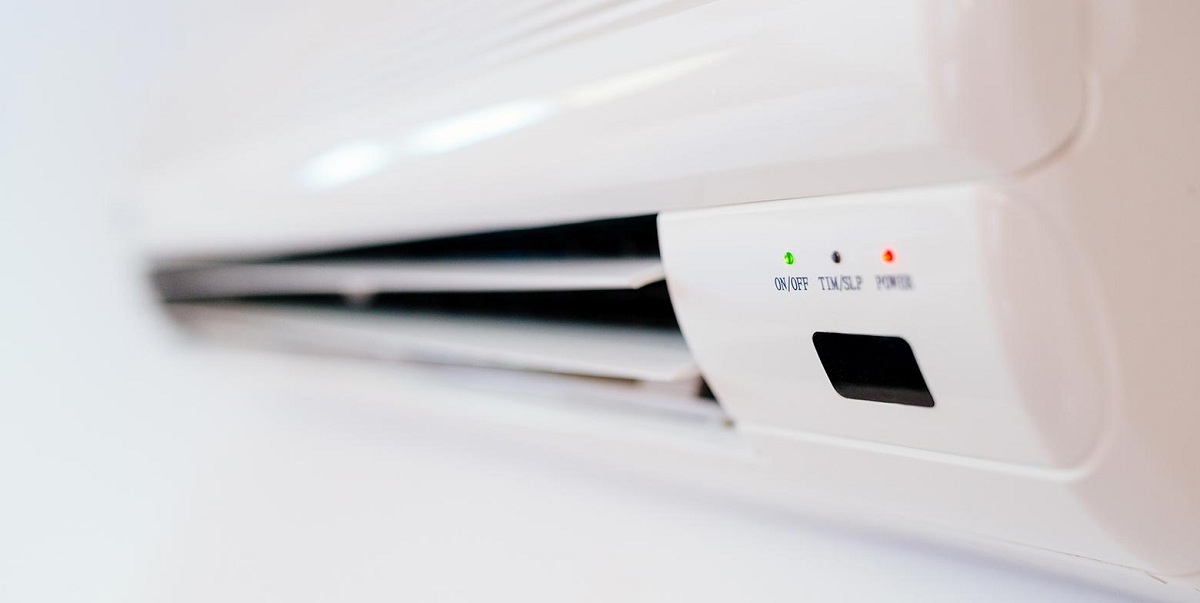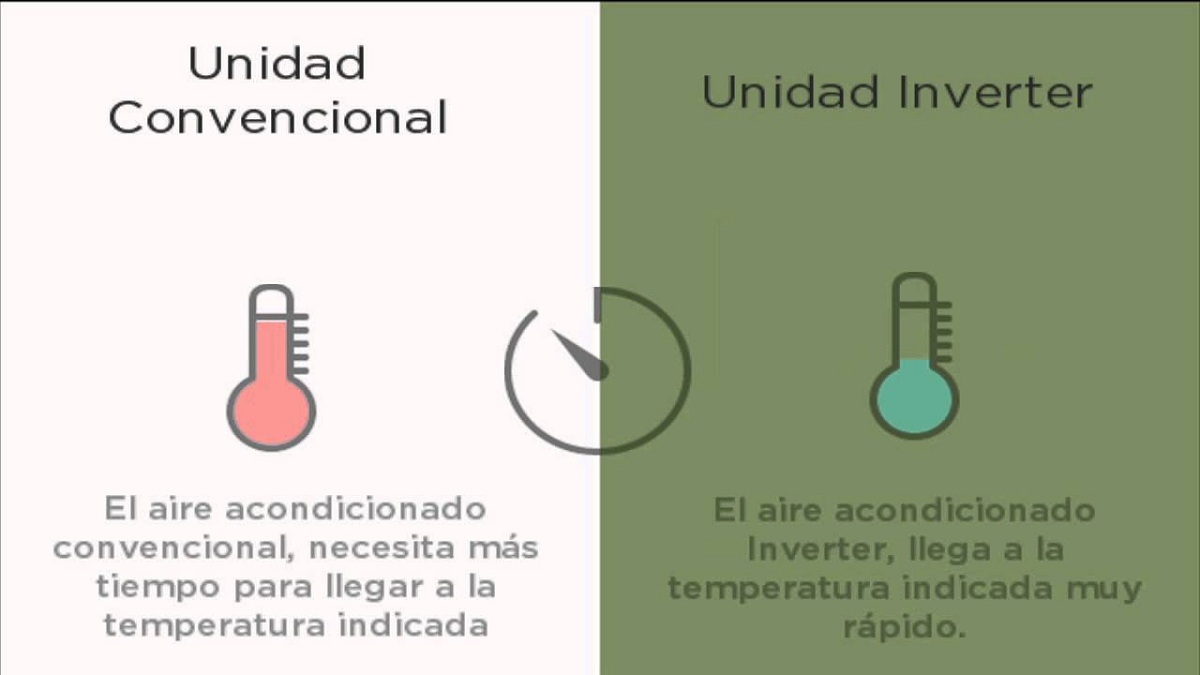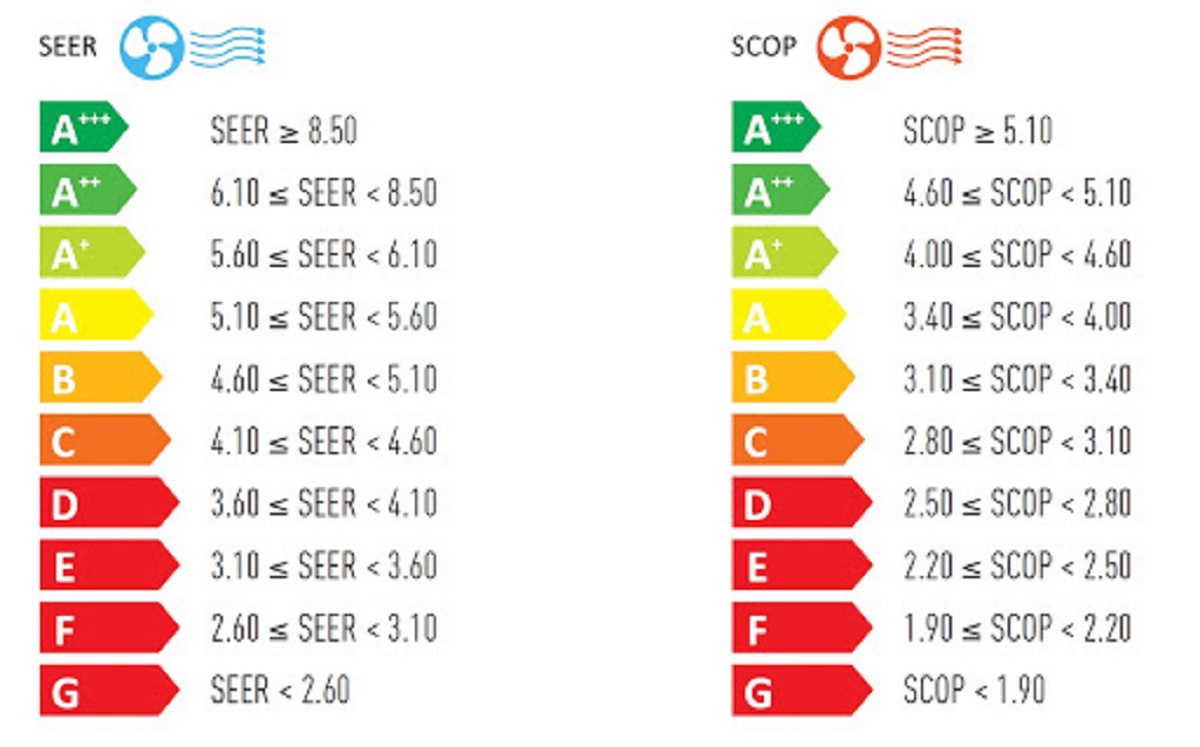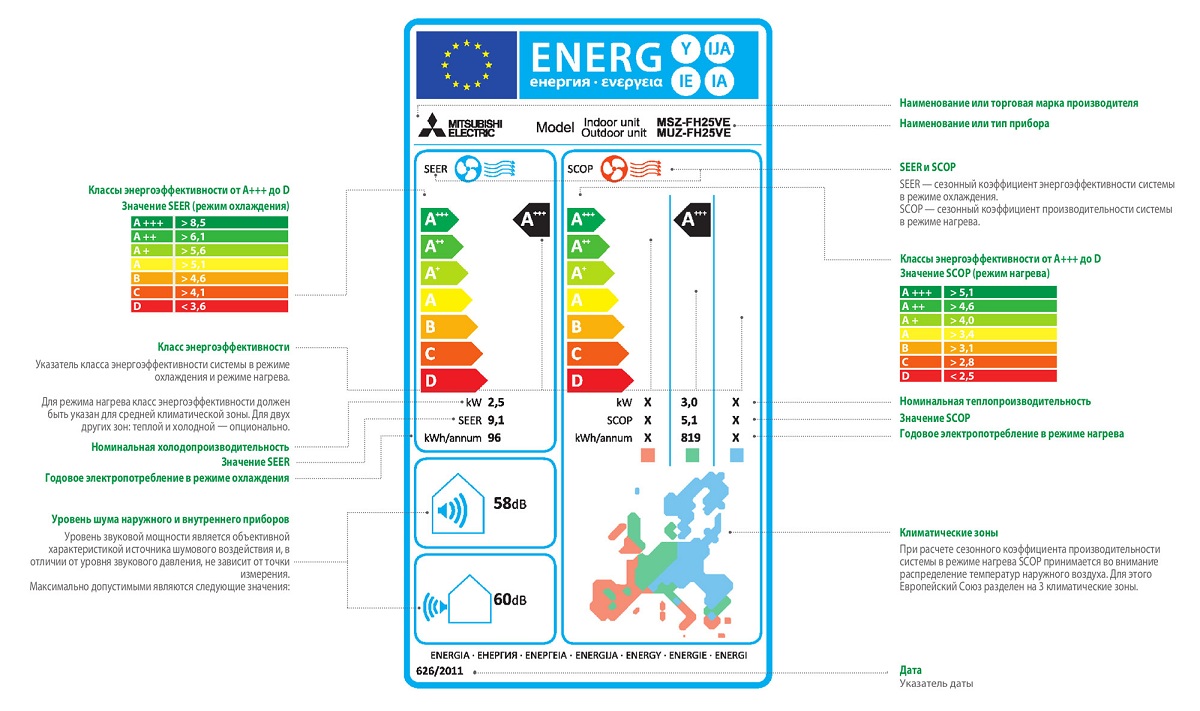
More and more household and electronic appliances are looking for energy efficiency in the home. In order to increase the performance of the devices, it is necessary to save energy but provide the same service. When we analyze the characteristics of an air conditioning or heat pump equipment, we do not know how to find the acronym of SEER and SCOP. Not many people know what the meanings and importance of these acronyms on the label are.
In this article we are going to tell you what the acronyms SEER and SCOP are, what they mean and how important they are.
EER and COP

When we analyze a heating or air conditioning equipment we see the SEER and SCOP labels. These labels will help us know how efficient a heat pump or air conditioner is. Depending on the energy efficiency of each device, we can know the energy consumption and its performance. For many years now, they have been labeled with the EER and COP labels. If the equipment only has a function, it must be conditioned and it does not have heating, we only owe the EER. Let's see what each of them starts:
- EER: Cooling power / Electric power consumed in cooling
- COP: Heating power / Electric power consumed in heating
Thanks to these values we can know how many thermal kW, both hot or cold, the equipment will give us for each kW it consumes from our electricity contracting. Depending on the consumption and performance of the equipment we can save more on the electricity bill.
For example, to understand this much better we are going to put the following situation: if our room needs 4 KW to be able to maintain a stable temperature of 20 degrees and our equipment has a COP of 3, we will be consuming the following: 4 kW (thermal) / 3 = 1,33 kW (electric).
Although at first glance this may seem simple, in reality it is not so simple. When the manufacturer labels appliances with these certificates, it is believed that the product must be fully charged. That is, it is done when the machine is giving 100% of its full power. As we know, this is not always the case. We put the air conditioning on hotter days and on less hot days. On hotter days it will be running at higher power than on less hot days. This makes the power consumed always the same.
Improved technology with SEER and SCOP
You have to know that technologically we are continuously improving. There are air conditioning and direct expansion heat pump equipment. This makes it possible to regulate the rotational speed of the compressor to be able to adapt to the demand. Thus, they manage to work at 40% of their total power without problems. This technological advance helps a lot to apply energy efficiency and energy savings. Seeing that the EER and COP values would not be enough to certify the equipment 100%, some of the manufacturers further improve the technology of the equipment to give better results. This means that these two certifications cannot be fully considered when it comes to knowing the energy efficiency of a piece of equipment.
For this reason, these two certificates have been allowed to be used. The new certificates are SEER and SCOP.
SEER and SCOP, the new energy efficiency certificates

As of the regulation that was established in 2013, the conditioning equipment is labeled with a seasonal energy efficiency factor known as SEER and a seasonal performance coefficient known as SCOP. These new radios are more realistic in terms of energy efficiency and use that is elevated to heat rubber or air conditioning equipment.
Calculating these two certificates is very complicated since many factors have to be taken into account. Some things that are taken into account in these parameters and that the previous ones were not considered are the consumption of the equipment when it is stopped and the operation of the equipment with space loads. This means that it will help us to better know the expense that you will have a computer on standby or when it is not operating at full capacity.
Thanks to this improvement in technology and the study of other variables, it makes these parameters much more reliable when comparing equipment. We must bear in mind that using the SEER and SCOP to estimate the annual consumption of an equipment can lead to an error even though these parameters are more reliable.
Energy classification of appliances

The energy classification of the appliances and equipment of the air conditioning and heat pumps is based on the parameters that we have seen. Let's analyze the label of an appliance or air conditioner to give an example and understand all this:
- Point to the equipment manufacturer air conditioning or heat pump.
- Product model.
- Energy classification: It is the one defined by the energy efficiency of each station. It is marked with the values of SEER and SCOP.
- Cooling power: indicates the ability to generate cold.
- SEER: refers to seasonal cold energy efficiency: the SEER value tells us how many thermal kW the equipment is capable of giving us for each electrical kW it consumes of our contracted power. The higher the value, the less electricity you need to be able to generate cold thermal power.
- SCOP: on the contrary, it is the seasonal energy efficiency in heat: as with the previous parameter, this value does not indicate how many thermal kW it will give us in exchange for each electrical kW consumed of our contracted power. The higher the SCOP value, the less electricity you need to generate heat.
- Indoor unit noise level: marks the decibels generated by the unit's indoor unit when operating. A silent device is considered 38 db or less.
- Outdoor unit noise level: It is the one that indicates the amount of decibels generated by the outdoor unit of our device in operation. This value will be higher than the indoor unit since it was outside.
- Annual energy consumption by geographical area. Depending on the area where we are there will be more or less temperature in the environment.
I hope that with this information you can learn more about the values of SEER and SCOP.